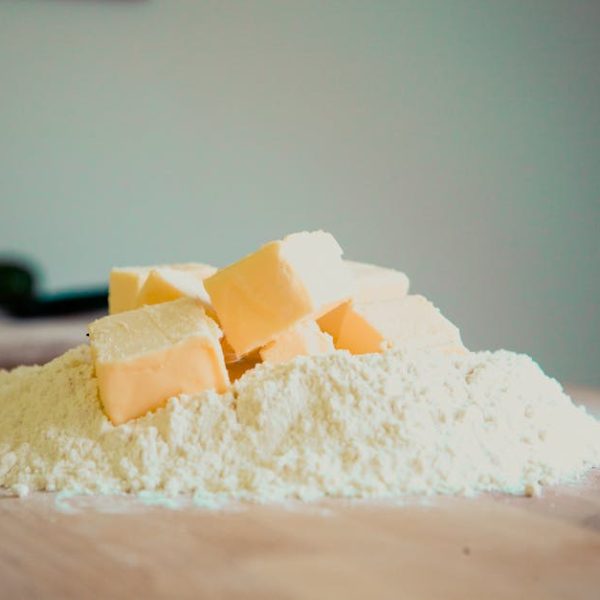When it comes to cooking, choosing the right ingredients that suit your flavor preference can be as important as the method employed. One such choice that chefs, both professional and home enthusiasts alike, encounter is whether to use garlic powder or minced garlic in their dishes. Understanding the differences between these two forms of garlic helps to capitalize on their unique qualities and enhance the overall taste of your meals.
Differences in the Production Process
Garlic powder and minced garlic might both originate from the same plant, but their production processes varying significantly. Garlic powder is made by dehydrating and grinding garlic cloves into a fine powder. The dehydration process involves drying the garlic at a low temperature to remove all moisture, creating a dry, crispy texture that can then be ground to a fine or coarse consistency, dependent on the intended use.
On the other hand, minced garlic comes straight from fresh garlic cloves. It is prepared by peeling and finely chopping or crushing the cloves. It’s straightforward, with fewer processes involved compared to garlic powder.
Comparison:
When it comes to preparation, minced garlic might require more time and effort due to the peeling and finely chopping involved. On the other hand, garlic powder is convenient and easy to use – a simple sprinkle, and you’re set. For cooks crunched for time or keen on simplicity, this convenience can be a deciding factor.
Variation in Taste and Aroma
While both forms come packed with that characteristic garlic flavor, minced garlic is often more potent and fresher. This is because it is prepared directly from the cloves, retaining the volatile compounds that contribute to its strong aroma and taste.
Alternatively, garlic powder, due to the dehydration process, has a much milder and less pungent taste. This makes it well-suited for dishes with delicate flavors where a strong garlic hint might be overwhelming.
Pro Tip:
Always consider the desired taste intensity in your cooking before selecting between garlic powder or minced garlic. While the former offers a subdued and well-rounded garlic inflection, the latter provides a robust, intense garlic flavor.
Usage in Cooking
Minced garlic is commonly used in dishes that require a fresh and robust garlic flavor, including sautés, sauces, and stir-fries. On the other hand, because of its mild flavor, garlic powder is often employed in dry rubs, marinades, or as a seasoning in foods like grilled chicken, soups, or roasted vegetables.
It’s also noteworthy that the effects of heat on minced garlic and garlic powder differ. When sautéing, minced garlic can quickly turn bitter if cooked too long or at high temperatures. Garlic powder, however, is more forgiving and blends well when mixed with other spices and herbs.
Best Practice:
Always add minced garlic toward the end of sautéing to prevent it from burning, or consider using garlic powder in dishes that require long cooking times or high heat.
Nutritional Differences
Garlic, being a vegetable, is rich in essential nutrients. However, these nutrients are not distributed equally in minced garlic and garlic powder.
Minced garlic retains more of the original nutrients of garlic as it goes through less processing. It is a great source of manganese, Vitamin B6, Vitamin C, and contains trace amounts of other nutrients.
Garlic powder, while still offering certain health benefits like antioxidant properties, is less nutrient-dense due to the dehydration process. The heat used in this process can degrade some of the vitamins and minerals in the garlic.
–Comparison:
| Minced Garlic | Garlic Powder | |
| Manganese | High | Low |
| Vitamin B6 | High | Low |
| Vitamin C | High | Low |
Remember, when it comes to nutritional content, minced garlic comes out on top. However, both versions have plenty to offer and can be included in a balanced diet.
Storage and Shelf-life
When it comes to storage, minced garlic requires refrigeration and has a shorter shelf-life due to its fresh state. It generally lasts a week or so in the fridge before it starts to lose its freshness. Signs of spoilage include a sour smell, yellow discoloration, or mold growth.
Garlic powder can last much longer if stored in a cool, dry place and properly sealed. It typically lasts up to four years before the flavor starts to deteriorate.
Pro Tip:
Treat minced garlic as a fresh vegetable – keep it in the fridge and try to use it up within a week. Store garlic powder among your spices in a cool, dry place to extend its shelf life as long as possible.
In a nutshell, the choice between garlic powder and minced garlic boils down to convenience, desired flavor intensity, and nutritional needs. By understanding the peculiarities of each, you can master the art of choosing the right form of garlic for your cooking endeavors. Happy cooking!
Key Takeaway:
- Minced garlic and garlic powder differ in their production process, taste, aroma, cooking uses, nutritional content, and storage requirements.
- Minced garlic, made by finely chopping fresh garlic cloves, offers a fresher and stronger flavor.
- Garlic powder is made by dehydrating and grinding garlic cloves, resulting in a milder taste. It’s also more convenient to use due to its simpler preparation.
- Nutrient-wise, minced garlic retains more vitamins and minerals compared to garlic powder because it undergoes less processing. However, the latter still has nutritional benefits.
- In terms of storage, minced garlic requires refrigeration and has a shorter shelf-life, while garlic powder can be stored longer in a cool, dry place.
Understanding the differences between minced garlic and garlic powder can enhance your culinary creativity, enabling you to select the right form of garlic to suit your flavor preferences, nutritional needs, and convenience factor. Enjoy experimenting with these two forms in your cooking journey for the perfect garlic-infused dishes.
FAQs
Q: Can minced garlic and garlic powder be used interchangeably in a recipe?
A: Yes, they can be used interchangeably, but you’ll need to adjust the quantity. Typically, 1/8 teaspoon of garlic powder is equivalent to one clove of garlic. However, note the flavor difference- garlic powder is milder than minced garlic.
Q: Is garlic powder healthier than minced garlic?
A: Minced garlic is typically more nutrient-dense as it goes through less processing, retaining more original nutrients. However, both forms offer health benefits and can be included in your balanced diet.
Q: Can I make garlic powder from minced garlic?
A: Yes, you can make garlic powder from minced garlic by dehydrating it and then grinding it into a fine powder. Ensure all moisture is removed to prevent spoilage.
Q: How long does minced garlic last in the fridge?
A: Minced garlic typically lasts about a week or so in the fridge before it begins to lose its freshness. Signs of spoilage include a sour smell, yellow discoloration, or mold growth.
Q: How should I store garlic powder to ensure it lasts longer?
A: Store garlic powder in a cool, dry place away from heat or sunlight and ensure it’s properly sealed. When stored correctly, it can last up to four years before the flavor begins to deteriorate.
We hope this article has provided valuable insights into the differences between minced garlic and garlic powder. Feel free to share it with others who might find it useful, and explore more of our blog posts for similar informative articles about cooking ingredients. Happy cooking!






